Premium Only Content
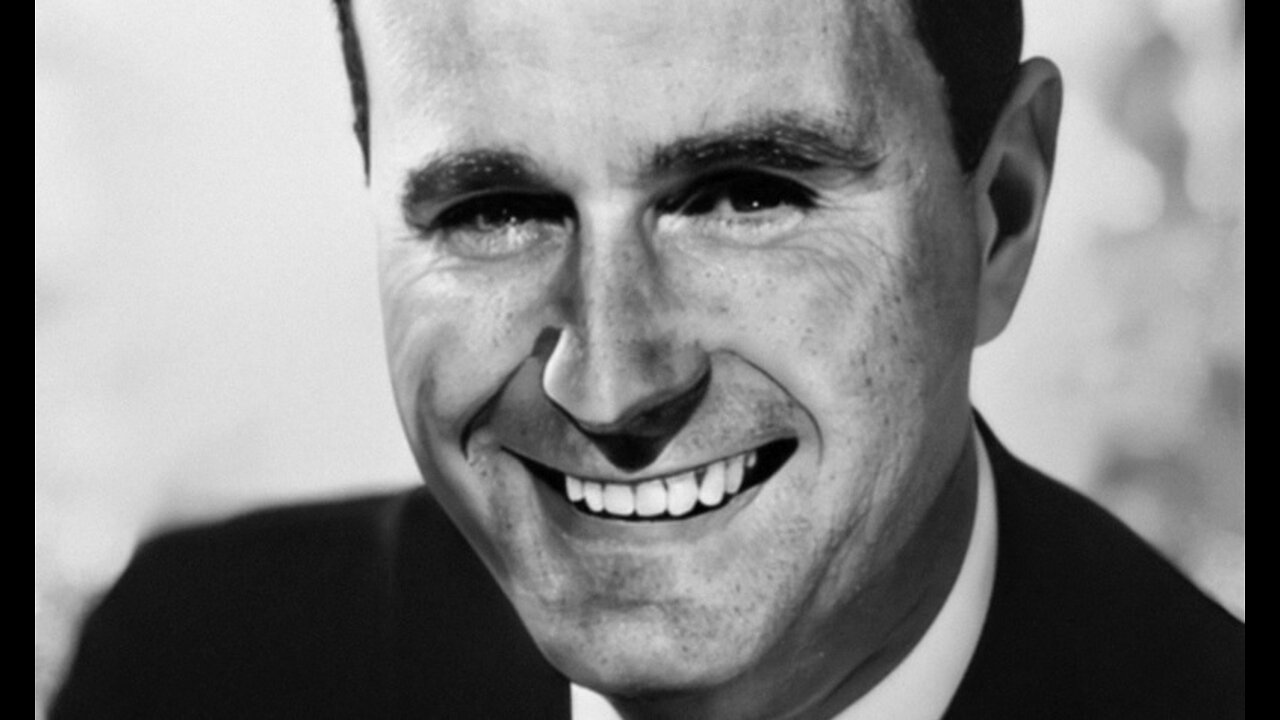
Suppressed Truths: The CIA, Mafia, and George Bush Scandal (Part 2)
How the FBI got corrupted by the Mafia: https://thememoryhole.substack.com/p/working-with-made-men?utm_source=profile&utm_medium=reader2
Thomas Gregory Clines (August 18, 1928 – July 30, 2013) was a Central Intelligence Agency covert operations officer who was a prominent figure in the Iran-Contra Affair.
Background
Clines served in the 1950–1953 Korean War, and was awarded the Korea Service Medal with four Bronze Stars, and the Combat Infantryman Badge; his unit also received the Distinguished Unit Citation.[1]
CIA career
In the 1950s, Clines worked at the CIA's Technical Services Division in Frankfurt, Germany.[2]
As a CIA agent, between 1961 and 1962, Clines was involved in covert operations in Cuba. Clines later joined Ted Shackley, David Atlee Phillips and David Sanchez Morales at JMWAVE, the CIA's operational headquarters in Miami, Florida for the Cuban Project also known as Operation Mongoose, a project to overthrow the government of Fidel Castro in Cuba.
During this period, beginning shortly after the 1961 Bay of Pigs Invasion, Clines developed a personal friendship with Nicaraguan President Anastasio Somoza Debayle, after his father, Anastasio Somoza Garcia, allowed the CIA to train anti-Cuban rebels in the country.[3]
Between 1966 and 1970, during the Vietnam War, Clines worked as Ted Shackley's deputy in charge of the CIA's secret war in Laos.[2]
Clines left Laos in 1970 and spent a year at the Naval War College in Newport, Rhode Island.
In 1972, Clines was put in charge of CIA operations in Chile, and in 1973, he helped Augusto Pinochet overthrow Chile's democratically elected president, Salvador Allende.
While working on the attempt to undermine the government of Fidel Castro in Cuba, Clines became friends with Rafael Quintero ("Chi Chi"). When he was given responsibility for Nicaragua in 1978, Thomas Clines recruited Quintero to help the CIA in its efforts against the socialist Sandinista National Liberation Front (FSLN) that governed Nicaragua. This included helping Anastasio Somoza Debayle to develop a counter-subversion program in the country.
After the CIA
In 1978, Clines left the CIA[4] and joined several other ex-CIA officials and contract operatives, including Rafael Quintero, Ted Shackley, and Ricardo Chavez in establishing API Distributors.[5]
In 1979, Clines established International Research and Trade Limited in Bermuda. Later that year, he worked with Hussein Salem to provide Egypt with U.S. military hardware. He made "illicit millions" through EATSCO (the Egyptian American Transport and Services Corporation), but in prosecuting Edwin P. Wilson the U.S. government made a plea bargain that enabled him to escape prosecution, though he had to pay an addition $100,000 to settle civil claims.[6]
Iran-Contra
Clines, as well as Oliver North, Edwin Wilson and Richard Secord, were involved in the conspiracy to provide arms to the Contras, and Clines himself as a key player[4] in the web of business operations founded by Secord and Iranian arms dealer Albert Hakim known as the "Enterprise".
Trial
On February 22, 1990, Clines was indicted on four felony counts of underreporting to the IRS his earnings from his business enterprises for the 1985 and 1986 tax years by at least $260,000, and failing to disclose on his 1985 and 1986 tax returns that he had foreign overseas bank accounts. The prosecutors were Stuart E. Abrams, Geoffrey S. Berman and William M. Treanor.[4]
On September 18, 1990, Clines was found guilty of all charges.[4] On December 13, 1990, U.S. District Judge Norman P. Ramsey sentenced Clines to 16 months in prison, $40,000 in fines,[4] and Clines was ordered to pay the cost of the prosecution. The Fourth Circuit U.S. Court of Appeals in Richmond, Virginia, on February 27, 1992, upheld his convictions, and Clines served his prison sentence. Clines is the only Iran-Contra defendant to have served a prison sentence.[4]
Further reading
Brewton, Pete. The Mafia, CIA and George Bush, 1992. ISBN 1561712035
References
THOMAS GREGORY CLINES (Age 84), Death Notice, Washington Post, 2 August 2013
Joseph J. Trento, Prelude to Terror: Edwin P. Wilson and the Legacy of America's Private Intelligence Networks (Carroll and Graf, 2005), p34
Trento (2005:134)
Walsh Iran / Contra Report - Chapter 11 United States v. Thomas G. Clines, a.k.a. ``C. Tea Walsh Chapter 11: United States v. Thomas G. Clines, a.k.a. ``C. Tea ] - Lawrence Walsh's Iran-Contra report, 1993
Schneider, Keith; Times, Special To the New York (March 8, 1987). "North's Aides Linked to Australia Study". The New York Times.
Joseph J. Trento, Prelude to Terror: Edwin P. Wilson and the Legacy of America's Private Intelligence Networks (Carroll and Graf, 2005), 170, 261-62, & 267-68. It is the thesis of Trento's book that Clines helped Theodore Shackley run a private intelligence network in the post-Watergate period and participated in plotting to making Wilson appear to be an ex-CIA agent turned rogue. As part of this plot, Clines's involvement in EATSCO was covered up. See Chapter 29 of Prelude to Terror.
Paul Lional Edward Helliwell (1915 – 24 December 1976) was an American lawyer, banker, OSS official, and CIA officer.[1] While serving in this capacity he became director of Sea Supply, Inc. and president of Castle Bank & Trust.[1] Helliwell was instrumental in setting up Civil Air Transport[2] and Castle Bank & Trust,[1] both of which were CIA proprietary companies. According to The Wall Street Journal, he was "deeply involved" in financing covert actions against Cuba from 1964 to 1975.[3][4] Helliwell was reported to have played a key role in the purchase of the site for Disney World.[5]
Career
Helliwell joined the United States Army during World War II. Later he transferred to the Office of Strategic Services (OSS). In 1943, with the rank of Colonel, he became head of the Secret Intelligence Branch of the OSS in Europe. Future CIA director William Casey eventually replaced him in 1945.[citation needed]
From Europe, Helliwell moved on to head the Secret Intelligence branch in the OSS China command.[6] While in China, Helliwell commanded, among others, future CIA officer E. Howard Hunt[7]
According to the Seagraves, Edward Lansdale found a large cache in caves and tunnels in the Philippines after World War II ended.[8][9][a] Ray Cline believes that both Paul Helliwell and Robert Anderson created 176 "black gold" banking accounts in 42 countries after moving loot from The Philippines by ship to support future United States operations.[8][9]
In 1947, Helliwell joined the CIA.[1]
In 1951, he formed a CIA front the Sea Supply Corporation which ran arms to Thailand police and Nationalist Chinese forces in Burma for ten years.[4]
He formed Castle Bank & Trust in the Bahamas in January 1962 to provide a financial channel to support CIA operations against Cuba and Latin America including the Bay of Pigs Invasion in 1962 for which he was one of the pay masters.[1][4]
Helliwell continued to work as a lawyer in Miami and served as legal counsel to a Panamanian holding company that controlled a Bahamian gambling casino connected with Meyer Lansky.[citation needed]
Beginning in 1965 by the IRS, "Operation Tradewinds" was an investigation into offshore tax havens primarily involving Castle Bank & Trust due to its association with suspected drug trafficking.[4][11]
Death
Helliwell suffered from emphysema in his later years. He died of a collapsed lung at his home in Coral Gables, Florida on December 24, 1976.[5] He was survived by his wife, Marjorie, and a daughter, Anne.[5]
Just after his death, two banks, Mercantile Bank Freeport and another Mercantile Bank in the Cayman Islands, which were both closely associated with Castle Bank & Trust, along with Castle Bank & Trust in both the Bahamas and Cayman Islands collapsed.[11] The two Merchantile Banks were subsidiaries of George Olmsted's International Bank (IB) of Washington, D.C., which he had purchased in 1955. IB held a two thirds share of the banks beginning in December 1972.[11][b]
Interviews
"Ho Chi Minh Prime Minister of North Vietnam". Periscope Films, 1966.
See also
M-Fund (in Japanese)
Explanatory notes
On October 19, 1945, Edward Lansdale began his fact finding mission after he arrived in Manila Bay aboard the United States Army Transport Ship (USAT) Uruguay.[10]
George Olmsted served in the United States Army during World War II and in 1944 was sent to the China-India-Burma theater as a colonel to form the G-5 civil affairs section (Economic and Political) of General Albert Wedemeyer's staff. G-5 was also responsible for clandestine activities, Lend-Lease, and the training of allied military forces.
Citations
Williams, Paul L. (2015). Operation Gladio: The Unholy Alliance Between the Vatican, the CIA, and the Mafia. New York: Prometheus Books. ISBN 978-1633884786.
Weatherbee, Donald E. (2008). Historical Dictionary of United States-Southeast Asia Relations. Lanham, MD: Scarecrow Press. pp. 155-156.
Scott, Peter Dale (2010). American War Machine: Deep Politics, the CIA Global Drug Connection, and the Road to Afghanistan. Lanham, MD: Rowman & Littlefield. p. 162.
Drinkhall, Jim (April 24, 1980). CIA Helped Quash Major, Star-Studded Tax Evasion Case[dead link]. Wall Street Journal via Washington Post. Archived from the original on January 8, 2021. Retrieved January 15, 2021.
Staff writer (Dec. 27, 1976). "Paul Helliwell rites tomorrow." Miami News. p. 4A.
Yu, Maochun (1996). OSS in China: Prelude to Cold War. New Haven, Conn.: Yale University Press. p. 226. ISBN 978-0300066982.
Hunt, E. Howard (1974). Undercover: Memoirs of an American Secret Agent. New York: Berkley. pp. 43–44.
Sterling.
Johnson, Chalmers (Nov. 20, 2003). "The Looting of Asia." Review of Gold Warriors: America's Secret Recovery of Yamashita's Gold by Sterling Seagrave and Peggy Seagrave London Review of Books, vol. 25, no. 22. Archived from the original.
Anderson 2020, pp. 127–130.
"Second Bahamian Bank Goes Under". Washington Star. 26 May 1977. Retrieved 15 January 2021 – via Wilmington Morning Star.
General sources
Anderson, Scott (2020). The Quiet Americans: Four CIA Spies at the Dawn of the Cold War—A Tragedy in Three Acts. New York: Doubleday. ISBN 978-0385540452.
Seagrave, Sterling; Seagrave, Peggy (2002). Opération "Lys d'or" : Le scandaleux secret de la guerre du Pacifique ou comment les Etats-Unis ont utilisé le trésor de guerre japonais pour financer la guerre froide (in French). Yves Michalon Éditions (L'Harmattan). ISBN 978-2841861606. OCLC 469641433.
Seagrave, Sterling; Seagrave, Peggy (2003). Gold Warriors: America's Secret Recovery of Yamashita's Gold. Verso Books. ISBN 978-1844675319.
Wolfe, Jane (1989). The Murchisons: The Rise and Fall of a Texas Dynasty. St. Martins Press. ISBN 978-0312034047.
Further reading
Brewton, Pete (1992). The Mafia, CIA and George Bush. New York: S.P.I. Books. ISBN 1561712035. (registration required).
Foglesong, Richard E. (2001). Married to the Mouse: Walt Disney World and Orlando. New Haven, Conn.: Yale University Press. ISBN 978-0300098280. JSTOR j.ctt1njk16.
Scott, Peter Dale (Aug. 17, 2008). "Deep Events and the CIA's Global Drug Connection."
Rafael "Chi Chi" Quintero Ibaria (September 16, 1940 – October 1, 2006) was a CIA operative.
Biography
Quintero was born in Camagüey, Cuba on September 16, 1940.[1] In the 1950s, he joined the resistance movement against Cuban dictator Fulgencio Batista.[1] A few days prior to the Cuban Revolution he joined Fidel Castro's group in the Sierra Maestra.
After becoming dissatisfied with the Castro regime, he joined Manuel Artime against Castro. Artime's group was supported by Frank Sturgis and the CIA as related by Fabian Escalante in CIA Covert Operations: 1959 - 1962. Sturgis flew a CIA plane over Havana, dropping thousands of pamphlets urging the Cuban people to overthrow the Castro regime on October 21, 1959, as part of Artime's operations. About December 1959, Manuel Artime left Cuba with a hundred thousand pesos when nothing happened. Quintero moved to the United States the next month.[citation needed]
On June 5, 1960, The Movement for the Recovery of the Revolution or (MRR) was created by Manuel Artime, Tony Varona, Aureliano Arango, José Miró Cardona and Quintero. Around the same time, Quintero became a member of Operation 40 along with other anti-Castro Cubans. In 1961 Quintero secretly re-entered Cuba and was arrested just before the Bay of Pigs Invasion, was released and returned to the U.S.[citation needed]
Rafael Quintero served as deputy leader of MRR under Artime in 1962. Manuel Artime got money from the CIA through Theodore Shackley in 1963. Artime, Quintero and Félix Rodríguez moved to Nicaragua creating an army of 300 men and obtained weapons, supplies and boats to invade Cuba.[citation needed]
Quintero died in Baltimore, Maryland after a history of kidney failure.[1]
Further reading
Pete Brewton, The Mafia, CIA and George Bush, 1992 ISBN 1561712035
References
Weiner, Tim (October 19, 2006). "Rafael Quintero, 66, Secret Agent Who Stalked Castro for C.I.A., Dies". The New York Times. New York. Retrieved April 21, 2013.
The Independent - Rafael (Chi Chi) Quintero obit
-
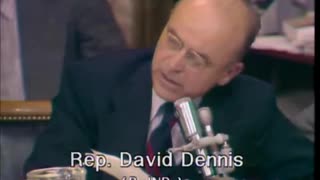 9:22:13
9:22:13
The Memory Hole
4 months agoNixon Impeachment Hearings Day 4 (1974-07-26)
870 -
 LIVE
LIVE
TruthStream with Joe and Scott
12 hours agoSatan and Lucifer part 3, what is the difference? Inversion and Manipulation? A deep dive into an intriguing topic with Ethan Lucas, Restream #441
561 watching -
 8:07
8:07
Dr. Nick Zyrowski
6 days agoHigh Dose Vitamin D Increases Fat Loss & Muscle Growth - New Study
2.69K4 -
 4:13:41
4:13:41
The Pascal Show
17 hours ago $0.02 earnedDIDDY TRIAL LIVE! Jane Doe 'Victim #2' Defense CROSS! Diddy Trial Day 20
1.06K -
 2:00:03
2:00:03
MG Show
17 hours agoLA Riots Battle of the Narratives; Optics vs Reality
10.7K16 -
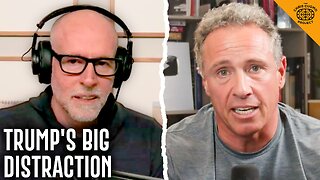 1:23:40
1:23:40
The Chris Cuomo Project
22 hours agoWhy Scott Galloway Says the LA Protests HELP Trump
1.67K -
 58:05
58:05
SinCityCrypto
16 hours ago $0.05 earnedBitcoin Cools off as Ethereum Starts its Run!!
2.54K1 -
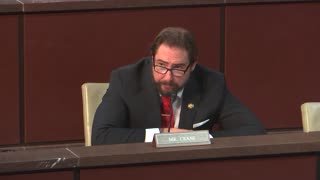 5:31
5:31
Congressman Eli Crane
14 hours agoDNA Profile Hacks Pose SERIOUS Exploitation Risk!
3.39K3 -
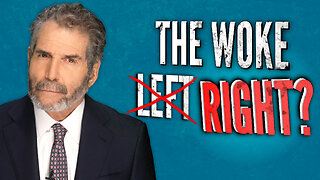 6:11
6:11
John Stossel
20 hours agoThe Extreme Right Goes Woke: How Some "Conservatives" Now Trash Freedom and Praise Karl Marx
9.15K53 -
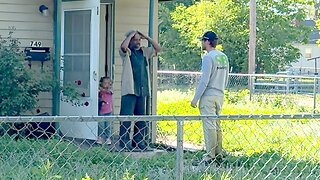 42:45
42:45
SB Mowing
11 days agoHe CURSED IN SHOCK then stared at me like I was CRAZY
16.5K80